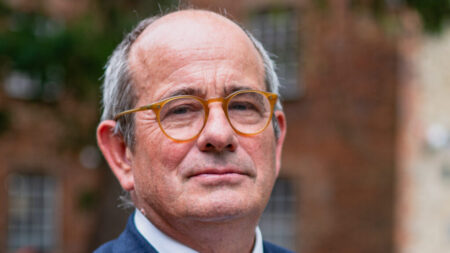The low-fee private school that works

James Tooley on the philosophy, history and outcomes of the launch of a low-cost school in Durham
They said it couldn’t be done. When we first mooted the idea of a low-cost private school in England, every commentator said we wouldn’t be able to make it work. Well, we’re proud to say that the Independent Grammar School: Durham (IGS:D) has successfully completed its fifth year.
Although we started even lower, the school’s fees are now £3,900 per child per annum, which is a quarter of the average annual fees in independent schools (£15,655), and about half of the average per capita funding in state schools (£7,450) across England. We don’t receive any subsidy from any source, neither state nor private, and we don’t have any bank debt, but nevertheless on these low fees we are able to post a small surplus. People ask how it is possible for us to do this. From our side, it makes us wonder where all the money goes in other schools, both private and state.
There were two main motivations for me to team up with Chris Gray, co-director and principal of Independent Grammar School: Durham (and also with economist Dr Barrie Craven) to bring into life the reality of a low-cost private school for England.
First, was the extraordinary evidence of the movement in developing countries of burgeoning low-cost private schools – something I’ve been researching for 20 years. In urban sub-Saharan Africa and South Asia, for instance, the vast majority – 70 to 80% – of poor children are in extremely low-cost private education, with schools fully funded by parental fees. Children in these schools outperform those in government schools and are the preferred choice of families on the poverty line. Parents are voting with their feet to avoid state education, and this movement of low-cost private education is the result.
The question arose: why was there no similar educational entrepreneurship in England?
The second motivation arose out of our conviction that private education is a superior option for everyone. But the stark reality (as I note below), was that private education was only affordable to the wealthy.
Why was there this disconnect between what was desirable and the reality?
Reactions
Once we’d found our building, in a converted church in the centre of Durham, we held meetings for prospective parents in the long lead up to the school eventually opening – it took well over a year (465 days) to get Department for Education registration. There was a great deal of enthusiasm from parents at those early meetings, who really understood the possibilities and potential of having a ‘third way’ choice between state schooling and expensive private education. But as the days and months dragged on as we waited for permissions, parents drifted away. On our first day, we had only four pupils. On that day, I was bombarded with messages from major media outlets, newspapers, television and radio, wanting to know how the school was doing. When I didn’t answer their calls, they wrote negative comments anyway. Never in the history of human education, one could say, with apologies to Winston Churchill, had so much been written, by so many, about so few.
If prospective parents were initially enthusiastic, the teacher unions were vociferous in their opposition throughout (although they’ve gone markedly quiet now that we’ve been proven to be successful). For the open evenings, parents had to run the gauntlet of the teacher union pickets. The unions, it was reported by The Guardian, said it was “impossible to provide a quality education on such a low budget”. They foisted glossy leaflets on prospective parents, saying that we would cruelly deprive the children of essentials such as hot water and central heating.
Indeed, the teacher union leader, Kevin Courtney, joint general secretary of the National Education Union, opined that it was “unbelievable” that you could run a school at the proposed low fees. Well, unbelievable or not, we’ve done it.
No doubt Courtney was relieved when the DfE reminded everyone that our school, like all new independent schools, would be “inspected during its first year of operation”, and that if standards were not being met, the government would take “appropriate action”. That would surely see us off.
We were nervous. Not passing an Ofsted inspection, of course, would mean closure, for it would be hard to convince sceptical parents of our virtues if we had even failed to convince Ofsted. But we passed the first Ofsted inspection with flying colours: Effectiveness of leadership and management? Good. Quality of teaching, learning and assessment? Good. Personal development, behaviour and welfare? Good. Outcomes for pupils? Good. Overall? Good.
We had cofounded our critics. Prospective parents could be reassured, as could potential investors. You can indeed run a good school for 50% of the per capita cost of state schooling.
How the school is doing
We started the school with four pupils, and it is now at capacity with more than 100 pupils, from reception to GCSE classes, with a waiting list. As we move to new facilities in a disused Methodist church which we’re converting into a school, just outside Durham (in an old mining village called Esh Winning, subject to DfE approval), we’ll be able to double in size.
The school passed its second Ofsted inspection late last year, again with ‘Good’. It may be worth quoting excerpts from the report, because it is as independent a judgement as you can get. We are a “small and welcoming school”, the inspection report reads, in which our pupils “enjoy learning in a calm environment”. Our school “is inclusive and nurturing”, a place where children “feel safe” and where they can develop “positive and good-natured relationships with staff and each other”. Student behaviour is exemplary, with “few incidents of poor behaviour”: Pupils are “polite and respectful”. Bullying “is not tolerated”.
As far as the curriculum is concerned, Ofsted reported that it is “ambitious”, but that “staff have high expectations for what pupils can achieve”. Classes are small, with pupils given “extra adult support when needed”. The school ensures that “all pupils, including those with special educational needs and/or disabilities (SEND), can access the curriculum”. These pupils “receive appropriate support”, including “extra personalised or small group learning”.
Indeed, one of the teacher union claims against us in the early days was that we would not be providing SEND. On the contrary, we have six children with education, health and care plans and 15 on the SEND register.
And we have a “range of enrichment activities and clubs” outside the main curriculum, including our specialities in music and gymnastics. These show in microcosm much that you need to know about our school: with modest resources and of course no specialised gym, but oozing with high aspirations and great enthusiasm from our exceptional coach, our children won first place in the North of England Gymnastics Under-16 and Under-13 competitions.
At IGS:D, says Ofsted, we place “high priority on teaching pupils to read”, through our “strong focus on the development of phonics for reading”. Our pupils “read often for pleasure and as part of their wider learning”. So positively have we awakened the love of reading in the children that the inspectors observed that children “talk with genuine enthusiasm about books and authors they enjoy. They appreciate the range of books they can choose to read in school.”
Overall, the learning environment at our school “is rich with relevant and exciting activities”. Personal development is a key focus, with the morning assembly supporting “relevant aspects of the curriculum that promote personal development”, including “equality and diversity”.
Moreover, the teaching staff “are positive about working at the school. They feel valued and enjoy working with their colleagues. They say leaders are considerate of their workload and welfare”.
Finally, “parents and carers are very complimentary about the school. They appreciate the regular meetings with staff and the range of support the school provides for pupils”. Very importantly for us “typically, most say that they ‘can’t recommend the school highly enough’”.
In other words, the Ofsted inspectors reiterate what we are continually hearing from parents, that our school is working extremely well, and providing a far less expensive option to them than other private schools, but an experience that is much better than they ever went through in state education – for the majority of our parents transferred their children from state schools rather than other private schools.
The prospects for new offerings in the future
It was never our intention to open just one school. Now that the Durham school has bedded in, we want to open further Independent Grammar Schools in the Northeast of England, to offer more parents a high-quality, affordable option, beyond their current choice of not quite good-enough state schooling or prohibitively expensive private schools. We know that our model works and we are keen to extend it to new settings. Finding the right building to rent is the key challenge here (our model is one of leasing rather than owning buildings, so that valuable capital isn’t tied up anywhere else than in delivering education). And we’re always interested in hearing from potential investors to help us extend our reach.

Independent Grammar School: Durham
How affordable is it?
How affordable are our fees? One way to look at this is to examine what economists call ‘discretionary income’. If parents pay for school fees, then these will have to come out of discretionary income, which takes gross family income and subtracts taxes and the amount required for necessities such as food, clothing and housing, as well as costs such as school uniforms and books.
Latest data shows discretionary income of about £800 a week for the average family in the richest income quintile, £250 for the fourth quintile and around £70 for the average family in the middle quintile. Currently, average private school fees are around £300 a week (dividing £15,655 by 52), that is, they are completely unaffordable except to those in the richest income quintile in the UK. Our fees of £75 a week are just about affordable to families in the median quartile and affordable to a family in the fourth income quartile.
So we are getting there – certainly taking private education away from the elite only, and bringing the price down to make it accessible to middle-earning families.
Since we got started, quite a few budding educational entrepreneurs have been in touch with us, to find out how we are making this work, with ideas of emulating the affordable model elsewhere in the British Isles. And we’re aware that a parallel alternative movement is emerging in the US too. In large part, this is because of parents’ experiences of lockdown: many didn’t like what they saw of the workings of what the Americans call ‘public’ schools, that is, state schools, attended by their children, and so have turned to a large range of alternatives. These vary from homeschool academies or co-ops, to hybrid schools (where children attend two or three days a week and are homeschooled the rest of the time), to micro-schools (small low-cost private schools, rather like ours). We’re pioneers in this country, but certainly feel part of a growing movement. The prospects for affordable private education in England have never felt stronger.
Professor James Tooley is vice-chancellor of the University of Buckingham and chairman of the Independent Grammar School: Durham board.

James Tooley
